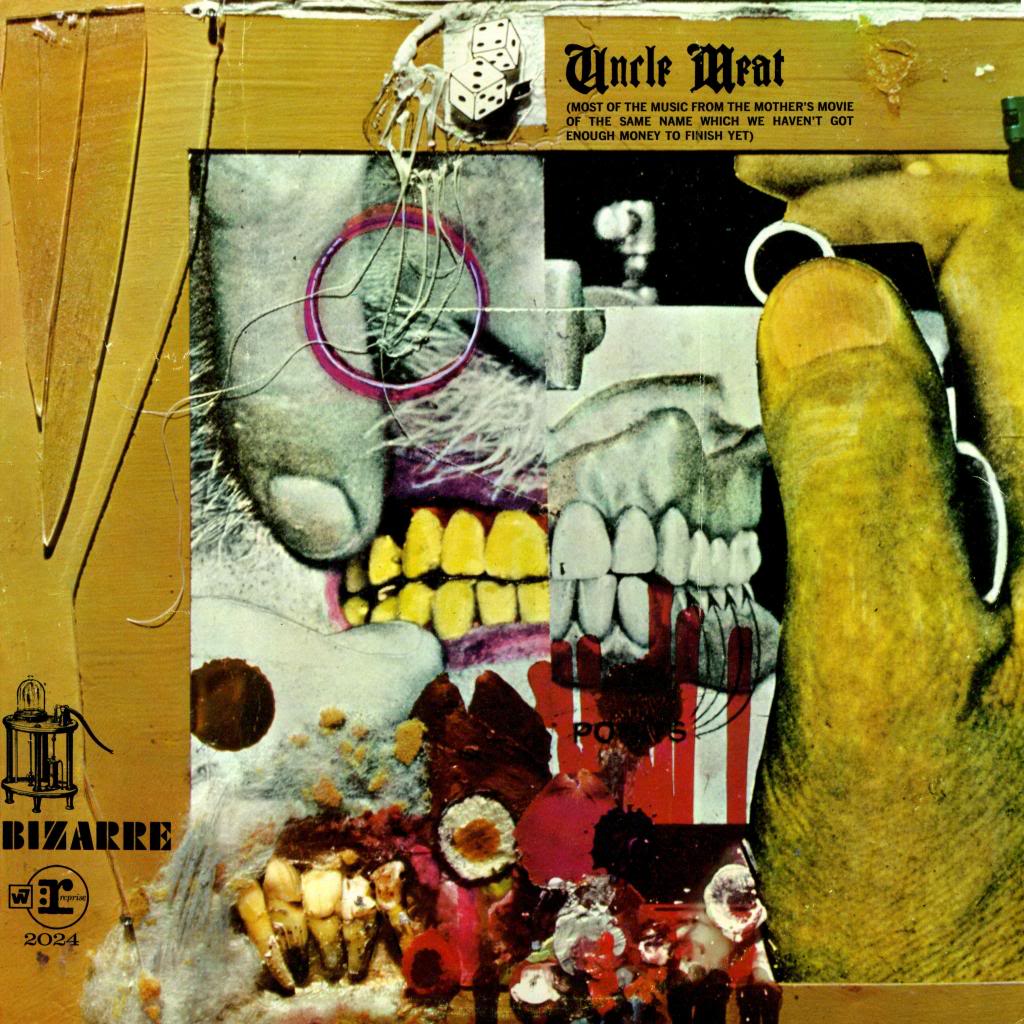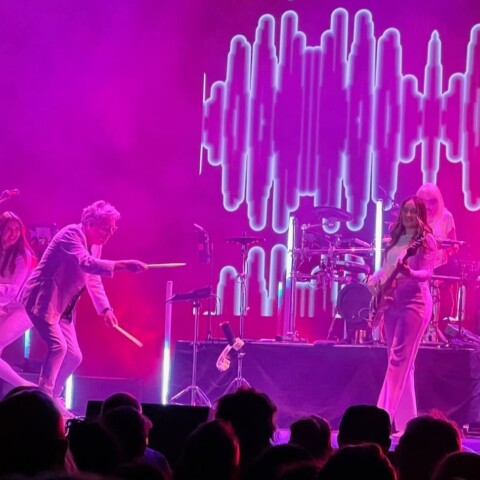With Universal reissuing remastered versions of Frank Zappa’s enormous catalogue, Gary Steel takes up the challenge of reviewing all of FZ’s genius album creations, one by one, and giving them a unique ‘Zappa Rating’. Today’s selection: Lumpy Gravy.
Frank Zappa – Lumpy Gravy (Zappa Records/Universal) #3
 IF FRANK ZAPPA’S first two albums were hard enough to get one’s head around, Lumpy Gravy was (and is) utterly bamboozling. Released in 1967 as a solo outing without the overt participation of his group the Mothers, it’s much closer to a modern classical project than that of a rock’n’roller, and therefore, could run accused of kick-starting the flawed concept of rock artistes and groups collaborating with symphony orchestras on overblown indulgences that one way or another, continues to this very day.
IF FRANK ZAPPA’S first two albums were hard enough to get one’s head around, Lumpy Gravy was (and is) utterly bamboozling. Released in 1967 as a solo outing without the overt participation of his group the Mothers, it’s much closer to a modern classical project than that of a rock’n’roller, and therefore, could run accused of kick-starting the flawed concept of rock artistes and groups collaborating with symphony orchestras on overblown indulgences that one way or another, continues to this very day.
Except for one thing: Zappa was putting ‘dots to paper’ writing orchestral music years before he ever picked up a guitar, and had even scored the music for a low-budget movie, and had his compositions performed by a real orchestra years before he led the Mothers.
But it’s simplistic to describe Lumpy Gravy as an orchestral recording, or a stab at modern classical, because it’s utterly unlike anything else – period. Yes, it does feature an orchestra of sorts, dubbed for the project the ‘Abnuceals Emuukha Electric Symphony Orchestra & Chorus’, and it’s true that the main melodic themes are performed by these players. But like We’re Only In It For The Money (which was designed as its companion piece but was delayed for a year), it’s also a masterpiece of tape-editing and sound manipulation.
 The two sections of the work are designed to accommodate the vinyl record, although each of these contains many melodic fragments, insane sound edits and absurd dialogue stitched into its fabric. It’s the kind of album that defeats the best attempts to describe it, simply because it makes up its own rules, is so much its own entity, that the usual clichés trotted out in reviews just don’t cut it.
The two sections of the work are designed to accommodate the vinyl record, although each of these contains many melodic fragments, insane sound edits and absurd dialogue stitched into its fabric. It’s the kind of album that defeats the best attempts to describe it, simply because it makes up its own rules, is so much its own entity, that the usual clichés trotted out in reviews just don’t cut it.
At the centre of Lumpy Gravy are “the people in the piano”, a group of freaks hand-picked by Zappa and encouraged to converse in a kind of stoned patois with the interior reverberations of the piano giving their voices a unique quality. One such voice starts it all off, with the classic line: “The way I see it Barry, this should be a very dynamite show.” Later, a female voice asks: “Did you ever live in a drum?” The small repertory company also tell stories, like the guy who goes out with a woman just so he can blow up the engine of her fancy car, or the grease monkey who keeps on getting fired for “goofing off”. The second section gets rolling with the immortal line: “I hear you’ve been having trouble with pigs and ponies,” and soon after, a discussion about one of Zappa’s favourite themes, the “big note” that’s at the centre of the universe. Later, someone starts to tell another story: “I remember when I was a… I don’t remember.” Followed by lunatic laughter. It’s the kind of freak , possibly drug-induced dialogue you could almost imagine members of the Manson Family having, or the genuine outsiders who peopled film director John Waters’ early movies, and it gives the album a socio-anthropological resonance that seldom applies to dots-on-paper projects.
The record is loaded with fabulous snippets of choice audio information, like the short, jolly, typically humorous piece right at the start, with its horns and keyboards and sped-up guitars, seguing into a fabulous smoky instrumental version of ‘Oh No!’, a piece that cropped up with lyrics on a later FZ album. But before ‘Oh No!’ gets very far at all, it’s interrupted by an insane keyboard collage, the people in the piano, a section of sped-up burlesque with needle-in-groove noise, and musique concrete effects ricocheting around the room, combining voices, brief musical motifs, snorts and burps. Ultimately, ‘Oh No!’ re-emerges with its lush vibraphones and its strings and flutes, sounding for all the world like the kind of film theme that Henry Mancini could have written at his peak. And that exposes one of Zappa’s paradoxes. He pushed the margins in every way imaginable, but wasn’t above turning out a tune that could have been interpreted as “easy listening”; and anyway, Zappa always was about context, and jarring edits from one genre to another, which often challenged his audience’s own aesthetic judgments and prejudices. [Hey, Henry Mancini may have been a laughing stock to the hippy generation, but how many rock groups wrote a piece as memorable as the ‘Pink Panther Theme’? As it happened, Mancini was quoted as being enamoured of Zappa, and ironically, died of the same disease].
 There are a few “serious” orchestral sections on Lumpy Gravy, but they never dominate, and cleverly, Zappa keeps the entertainment value high – after all, he’s asking people to take a lot on board, and to accept a mad-cap concoction that’s so outrageous that even the most experimental rock records of the era seem easy to absorb by comparison. An important point is that for all the bizarre, seemingly abstract (but highly structured) collage madness going on here, there’s no whiff of the academy about it, no sense that it can’t be fun, and there’s a kinetic energy running through it that the somewhat stuffy world of serious composition would not have tolerated. And as soon as the orchestrations start to sound serious, he pulls the plug and inserts some more insane tape edits, or more surprisingly melodic instrumental fragments from tunes later turned into songs on We’re Only In It For The Money. In fact, it finishes with a wonderfully happy, almost surf-group version of the tune that became ‘Take Your Clothes Off When You Dance’, from that very record.
There are a few “serious” orchestral sections on Lumpy Gravy, but they never dominate, and cleverly, Zappa keeps the entertainment value high – after all, he’s asking people to take a lot on board, and to accept a mad-cap concoction that’s so outrageous that even the most experimental rock records of the era seem easy to absorb by comparison. An important point is that for all the bizarre, seemingly abstract (but highly structured) collage madness going on here, there’s no whiff of the academy about it, no sense that it can’t be fun, and there’s a kinetic energy running through it that the somewhat stuffy world of serious composition would not have tolerated. And as soon as the orchestrations start to sound serious, he pulls the plug and inserts some more insane tape edits, or more surprisingly melodic instrumental fragments from tunes later turned into songs on We’re Only In It For The Money. In fact, it finishes with a wonderfully happy, almost surf-group version of the tune that became ‘Take Your Clothes Off When You Dance’, from that very record.
I appreciate it, and if I’m in the mood, even love Lumpy Gravy, but I have to admit: I still find it a challenging listen, mainly because I have to be in the mood for the people in the piano dialogue, and be willing to forgive the fact that the sound isn’t great. It’s pretty clear that using the four tracks that were available to him in 1967 to render a masterpiece from sources that included an orchestra, smaller music groups, dialogue and collage – and included hundreds of edits and manipulation of speed – had an pretty substantial impact on the sonic quality. Not that it’s horrible, just that it doesn’t give a hi-fidelity freak like me the audio jollies I look for in my music hit.
 For this version of Lumpy Gravy, they’ve used the 1993 “1630 digital master” that Zappa made just before he died, and sprinkled it with 2012 fairy dust. There’s no major difference to the overall quality of sound, but the stereo imaging is a little more vivid, and like Absolutely Free, the bass levels have been substantively boosted. Whether this is a concession to current tastes or a return to the bass levels on the original vinyl, I wouldn’t know, but overall, it is a slightly sonically improved product on previous versions.
For this version of Lumpy Gravy, they’ve used the 1993 “1630 digital master” that Zappa made just before he died, and sprinkled it with 2012 fairy dust. There’s no major difference to the overall quality of sound, but the stereo imaging is a little more vivid, and like Absolutely Free, the bass levels have been substantively boosted. Whether this is a concession to current tastes or a return to the bass levels on the original vinyl, I wouldn’t know, but overall, it is a slightly sonically improved product on previous versions.
The cover is substantively the same, but they’ve added a speech bubble to Zappa’s picture on the back, and deleted the list of songs entirely from the packaging. I’d certainly like to know what their reasoning was behind that decision.
Lumpy Gravy was, and is, a one-of-a-kind album, and many Zappa connoisseurs rate it amongst his best. Anyone new to FZ, however, should be warned that it’s probably not the easiest way in the door. GARY STEEL
Zappa Rating
Music = 4.5/5
Sound = 3/5
Recommendation: There are sonic improvements here, but a serious fan would probably be happy with the Lumpy Money box, and the Ryko version isn’t too shabby by comparison.















